Search Engine Optimization (SEO) has become an essential skill in the digital marketing space. Whether you run a business, a blog, or simply want to improve your website’s visibility, SEO is key to attracting organic traffic and boosting your online presence. This comprehensive guide will help beginners understand SEO and provide actionable steps on how to start learning and implementing it.
1. What is SEO and Why It’s Important?
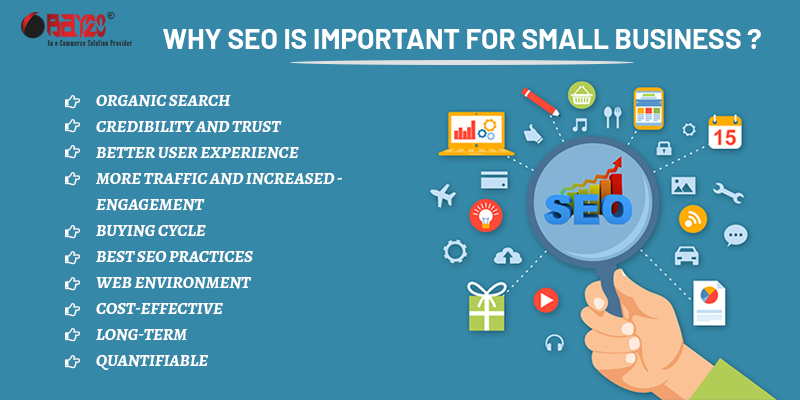
SEO stands for Search Engine Optimization. It’s the process of optimizing your website to rank higher on search engines like Google, Bing, and Yahoo. The higher your pages rank, the more visibility you get, leading to increased traffic and better chances of converting visitors into customers.
Why is SEO important?
- Organic Traffic: SEO helps you attract organic traffic, which is free compared to paid advertising.
- Credibility and Trust: Higher rankings signal credibility, as users tend to trust Google’s results.
- Long-Term Benefits: SEO is a long-term strategy. The efforts you put in today can benefit your site for months and years to come.
Understanding SEO isn’t just about learning technical strategies but also understanding how people search for information, what they value, and how search engines meet these needs.
2. Key Components of SEO
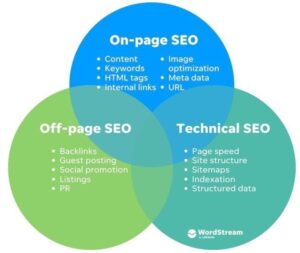
On-Page SEO
This refers to optimizing individual pages on your website to rank higher in search engines. It involves tactics like keyword optimization, ensuring the content is high quality, and properly structuring pages for better crawlability.
Off-Page SEO
Off-page SEO includes actions taken outside of your website to impact rankings within search engine result pages (SERPs). Link building, brand mentions, and social signals all fall under off-page SEO.
Technical SEO
Technical SEO ensures your website meets technical requirements for search engines to crawl and index your site. This includes things like optimizing your site’s speed, creating XML sitemaps, and ensuring mobile-friendliness.
3. Basic SEO Terminology
Before diving into SEO, it’s important to familiarize yourself with some common terms:
- SERP: Search Engine Results Page. The page displayed by search engines in response to a query.
- Keywords: Words or phrases that users type into search engines.
- Backlinks: Links from other websites that point to your site.
- Domain Authority: A score that predicts how well your website will rank on SERPs.
- Crawl: When search engines browse the web to find new content.
- Indexing: Adding a web page into Google’s database so it can be displayed in SERPs.
4. SEO Tools You’ll Need
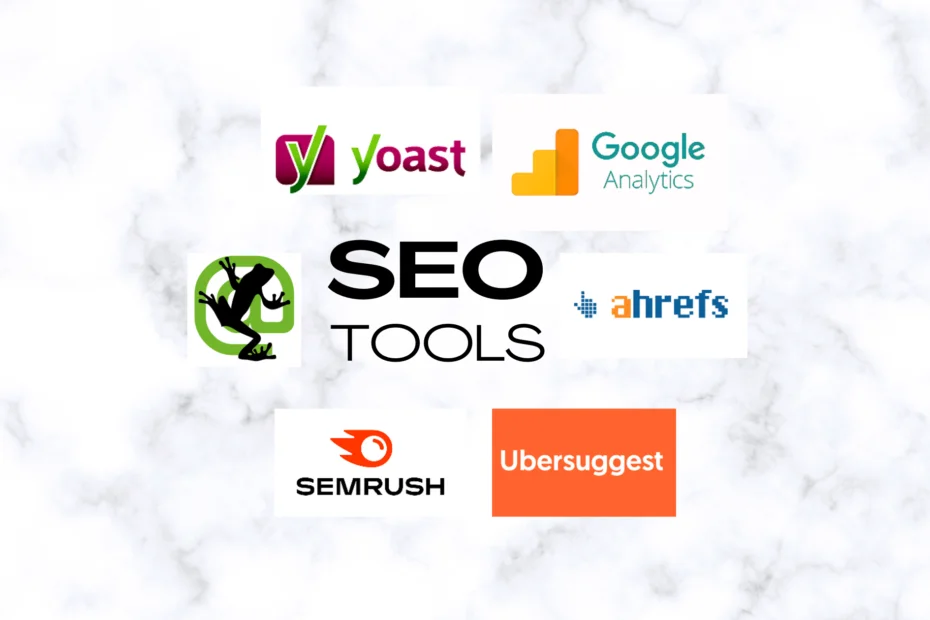
To effectively learn SEO, you need to familiarize yourself with the tools that professionals use. Here are a few essentials:
- Google Analytics: To track traffic and user behavior on your site.
- Google Search Console: To monitor your site’s presence in Google search results.
- Ahrefs: A powerful SEO tool that helps with backlink analysis, keyword research, and competitor research.
- SEMrush: All-in-one marketing tool for improving visibility and discovering marketing insights.
- Yoast SEO: A popular WordPress plugin that helps optimize your on-page SEO.
5. How Search Engines Work

Search engines like Google use algorithms to rank websites based on their relevance and quality. They follow these steps:
- Crawling: Search engines use bots to scan the web for new content.
- Indexing: The crawled pages are then stored in a massive database known as an index.
- Ranking: When a user searches for something, search engines sort through their index to rank the most relevant results.
Understanding this process helps you see the importance of having a well-structured and regularly updated website.
6. Starting with On-Page SEO
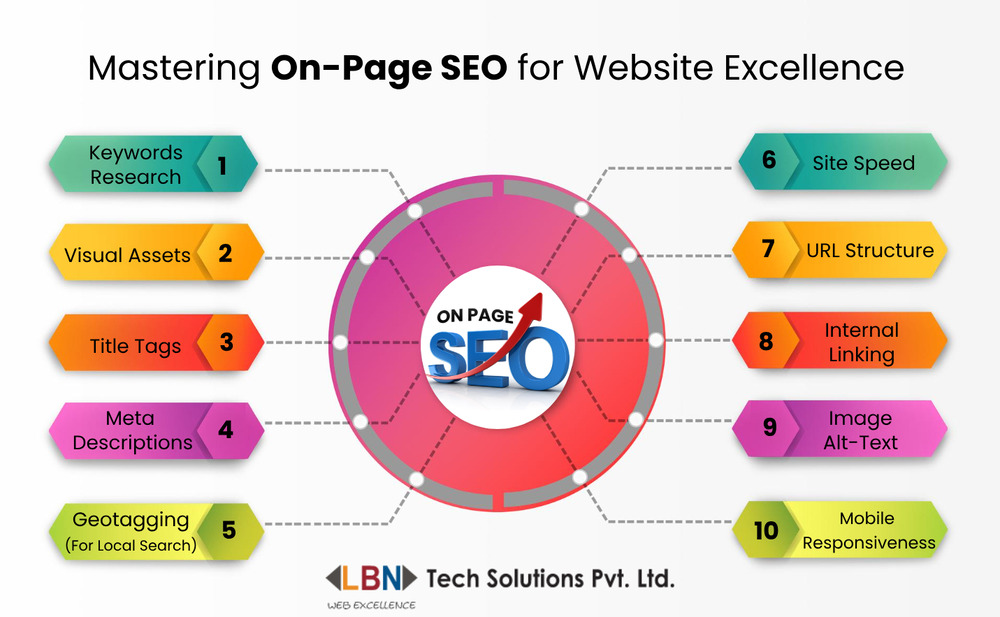
Keyword Research
Keyword research is the foundation of SEO. It involves discovering what terms your target audience is searching for, then creating content around those keywords. Use tools like Google Keyword Planner or Ubersuggest to find relevant keywords. Focus on a mix of:
- Short-tail keywords: Short, general phrases (e.g., “SEO”).
- Long-tail keywords: More specific phrases (e.g., “how to start learning SEO”).
Optimizing Content for SEO
Your content needs to be both informative and optimized for search engines. Here are a few tips:
- Use your target keywords naturally within your content.
- Provide value: Search engines prioritize quality content. Make sure your article answers the reader’s question comprehensively.
- Use multimedia: Images, videos, and infographics can enhance the user experience and improve SEO.
Meta Tags and Headers
- Meta Title: The clickable title that appears in search results. It should include your primary keyword.
- Meta Description: A brief description of your content. This can affect click-through rates.
- Headers (H1, H2, H3): Organize your content using headers to make it easier for both users and search engines to understand.
7. Off-Page SEO: Building Authority
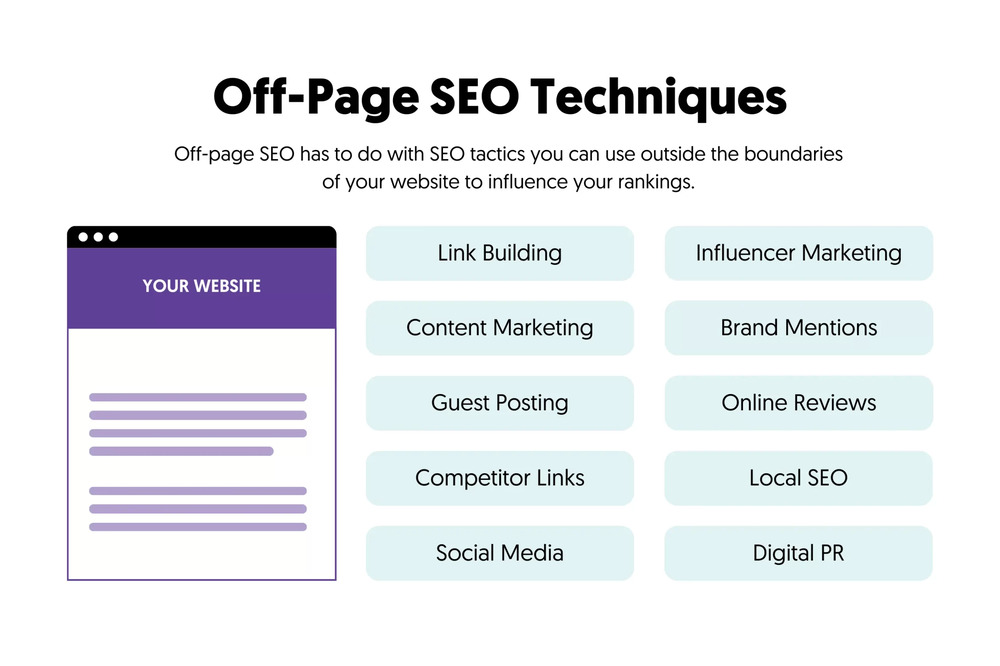
Link Building
Link building is one of the most critical aspects of off-page SEO. Search engines view backlinks as votes of confidence in your content.
- Guest Posting: Write articles for other websites to gain backlinks.
- Broken Link Building: Find broken links on other websites and offer your content as a replacement.
- Influencer Outreach: Partner with influencers or industry leaders to get mentions and links.
Social Signals and SEO
Social media doesn’t directly impact rankings, but it does help drive traffic and brand awareness. Shares and likes can lead to more exposure, and potentially more backlinks.
Brand Mentions
Even without a direct link, a mention of your brand can enhance your online presence. Tools like Google Alerts or Mention can help you monitor where your brand is being talked about.
8. Understanding Technical SEO

Site Structure and Crawling
A clean, well-organized site structure allows search engines to crawl your site more efficiently. Use internal links to help search engines discover your content.
XML Sitemaps
An XML sitemap is a file that helps search engines navigate your site. Ensure you submit your sitemap to Google through Google Search Console.
Mobile Optimization and Speed
Google uses mobile-first indexing, meaning it primarily uses the mobile version of your site for ranking. Ensure your site is mobile-friendly and loads quickly.
- Use responsive design so your site looks good on all devices.
- Minimize loading time by compressing images and using a content delivery network (CDN).
9. Learning Resources and Courses
There are many resources available to help you learn SEO, from blogs and videos to online courses. Here are a few recommended options:
- Google’s SEO Starter Guide: A free, detailed guide on the basics of SEO.
- Moz’s Beginner’s Guide to SEO: A comprehensive resource from one of the leading SEO platforms.
- Yoast Academy: Offers both free and premium SEO courses.
- Ahrefs Blog: A wealth of information on SEO techniques and case studies.
- Coursera and Udemy: These platforms offer paid SEO courses, often from leading professionals.
10. Best Practices and Common Mistakes
Best Practices
- Create high-quality content consistently.
- Prioritize user experience by optimizing for both speed and design.
- Stay patient: SEO takes time. Results often don’t appear overnight.
Common Mistakes
- Keyword stuffing: Overusing keywords can hurt your rankings.
- Ignoring mobile optimization: With the rise of mobile users, this can be detrimental.
- Buying backlinks: This can result in penalties from Google.
11. Staying Updated in SEO
SEO is constantly evolving. Google regularly updates its algorithms, so it’s important to stay informed about the latest changes. Follow these sources:
- Google Search Central Blog: Google’s official blog for SEO updates.
- SEO-focused forums: Engage with other professionals in forums like BlackHatWorld or the Moz Q&A section.
- SEO news sites: Sites like Search Engine Land and Search Engine Journal regularly post updates on the latest trends.
12. Conclusion
SEO may seem daunting at first, but with patience and consistent effort, anyone can learn and master it. Start by familiarizing yourself with the basics, use the right tools, and continually optimize your site for both users and search engines. As you grow in your knowledge, remember to stay updated with the latest SEO trends, and you’ll be well on your way to success.
By following this guide, you’ll have a solid foundation to begin your SEO journey. The key is to start slow, practice regularly, and always


